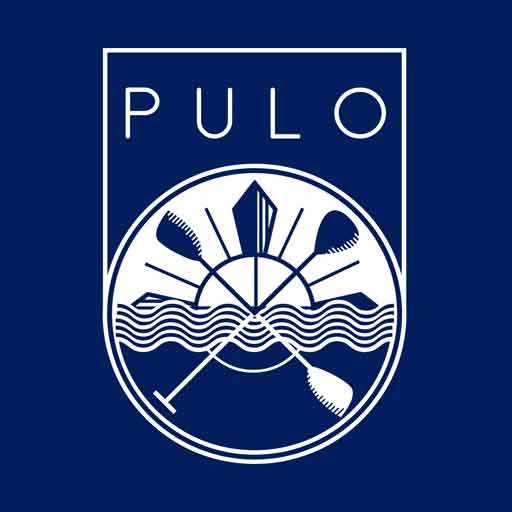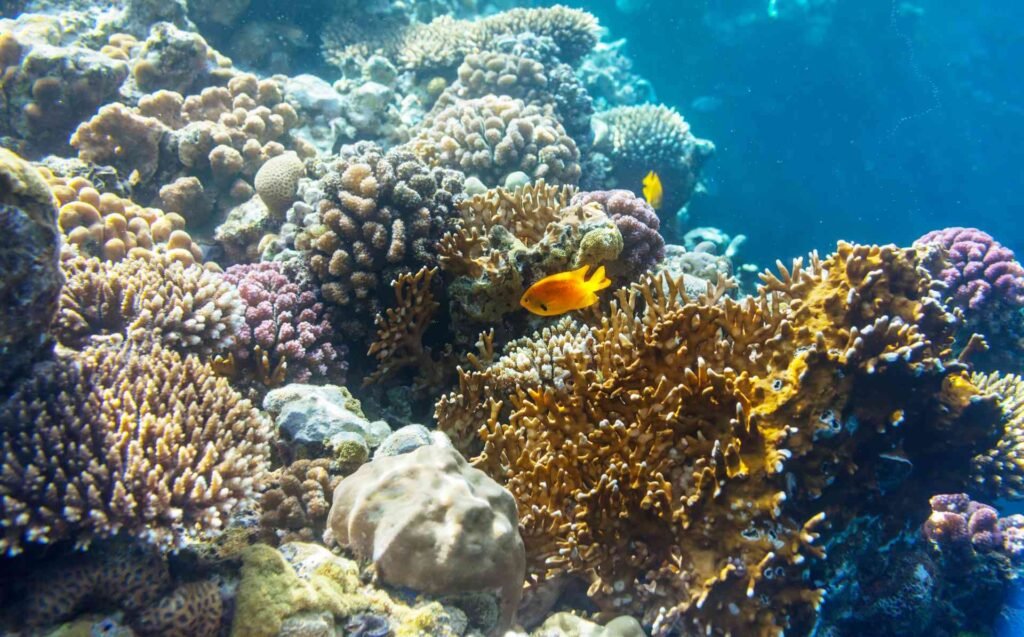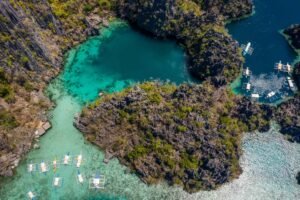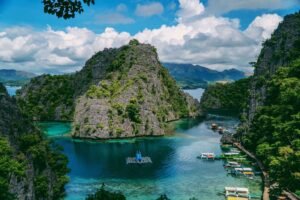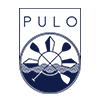Maintaining respect and minimizing human impact on marine protected areas like Siete Pecados Marine Park is vital for preserving these environments for future generations. Avoiding the actions mentioned in this post support not only the rich biodiversity of the area but also the cultural, economic, and aesthetic values that these pristine marine landscape offer.
While snorkeling in Siete Pecados, you will see several warning and guidelines tied to the rock formations. These warnings are written all over the place on signages in Siete Pecados Marine Park.
But what exactly are the reasons behind banning these things in a marine sanctuary like Siete Pecados? What exactly happens if tourists violate any of these guidelines repeatedly?
How Seemingly Harmless Activities Can Actually Harm Siete Pecados?
1. Fish Feeding
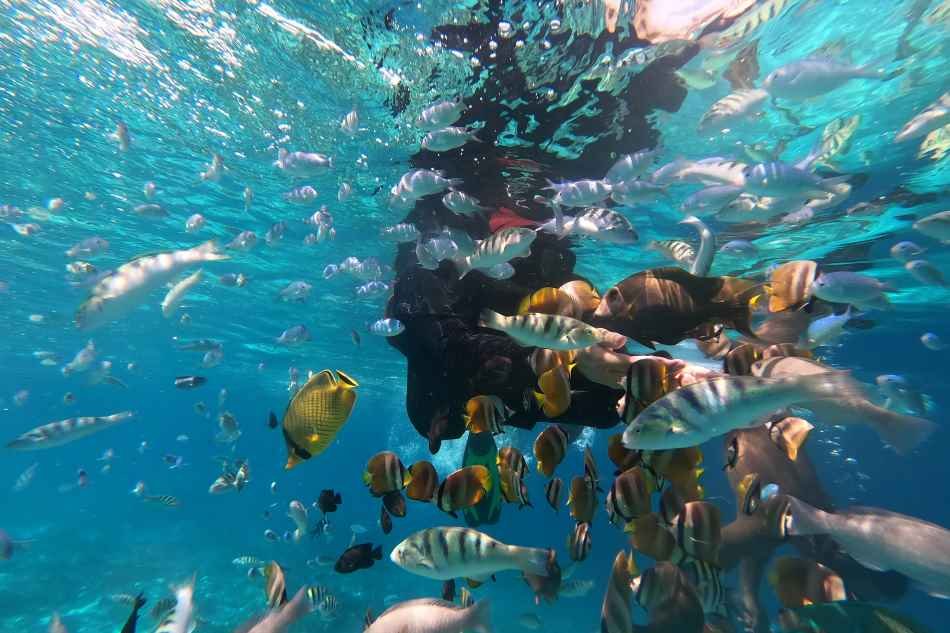
Fish feeding, especially in marine ecosystem and coral reef areas, is considered detrimental for several reasons:
Natural Behavior Alteration
Fish feeding can change the natural behavior of marine species. Fish that are regularly fed by humas may become less wary of humans and more aggressive. This can lead to increased risks of bites or stings to humans and can also disrupt the natural predatory-prey relationship in the ecosystem.
Dietary Imbalance
The food often given to fish (like bread or other processed foods) is not part of their natural diet and does not provide the necessary nutrients they need to thrive. This can lead to malnutrition and other health problems.
Population Imbalance
Fish that benefit most from feeding, often the larger and more aggressive species, may proliferate at the expense of other species. This can reduce biodiversity and upset the ecological balance of the area.
Coral Damage
Many fishes play critical roles in coral reef ecosystems. For example, parrotfish eat algae that can otherwise overwhelm coral. When these fishes are distracted from their natural roles dute to feeding, the health of the coral reef can decline.
Pollution
Uneaten food and the waste products from the fed fish can increase nutrient levels in the water, leading to various forms of pollution. Elevated nutrients can promote algal blooms, which can smother coral and deplete oxygen in the water, harming marine life.
Dependency
Fish can become dependent on handouts and lose their ability to forage for natural food. In place where fish feeding is seasonal or tied to tourism, like Siete Pecados Marine Park, fish can struggle to find food during off-peak periods.
Disease Spread
Concentrations of fish attracted to feeding sites can facilitate the spread of diseases. This is exacerbated if the food provided is not sanitary or if it’s raw seafood that might carry pathogens.
Attraction of Predators
Regular fish feeding can attract larger predators to the area, which can pose risks to both the fish being fed and humans in the vicinity.
For these reasons and more, Siete Pecados Marine Park, and other marine parks in Coron, Palawan have strict regulations or bans against fish feeding. It’s always essential to respect this guideline and understand the potential consequences of seemingly harmless activities in fragile ecosystems.
2. Use of Wooden Poles to Push a Boat and Anchoring
While this is not for you, it’s important to understand why using a wooden pole to slowly propel the boat forward and anchoring is bad for the Marine Ecosystem.
In the Philippines, traditional boat’s engine is usually turned off before anchoring to stop the momentum since boats have no breaks or can’t reverse. While approaching the docking area, boats are pushed using a wooden pole, usually a bamboo (bamboo is strong and lighter than solid wooden pole).
Physical Damage to Corals
Corals are delicate and can be easily damaged or broken. Pushing off with a pole can directly impact and break coral structures. Even minor disturbances can cause damage that takes years or even decades to heal.
Sediment Disruption
Poking or pushing against the seabed can stir up sediment. This suspended sediment can then settle or coral, smothering them and blocking the sunlight they need to their symbiotic algae. This can stress the corals and lead to bleaching events.
Disruption of Marine Life
The seafloor and coral structures provide habitats for a myriad of marine organisms. Disturbances can destroy homes, expose species to predators, or cause direct harm.
Potential for Anchor Damage
If boats are using poles because they are anchoring in shallow areas or areas with coral, the anchor itself can cause significant damage to coral structures.
Cumulative Impact
While a single act might seem minor, the cumulative effect of may boats pushing off or anchoring can lead to widespread degradation of marine ecosystem over time.
Habitat Alteration
Consistent disturbances can lead to shifts in the types of organisms that inhabit an area, potentially leading to imbalance in the ecosystem.
3. Littering
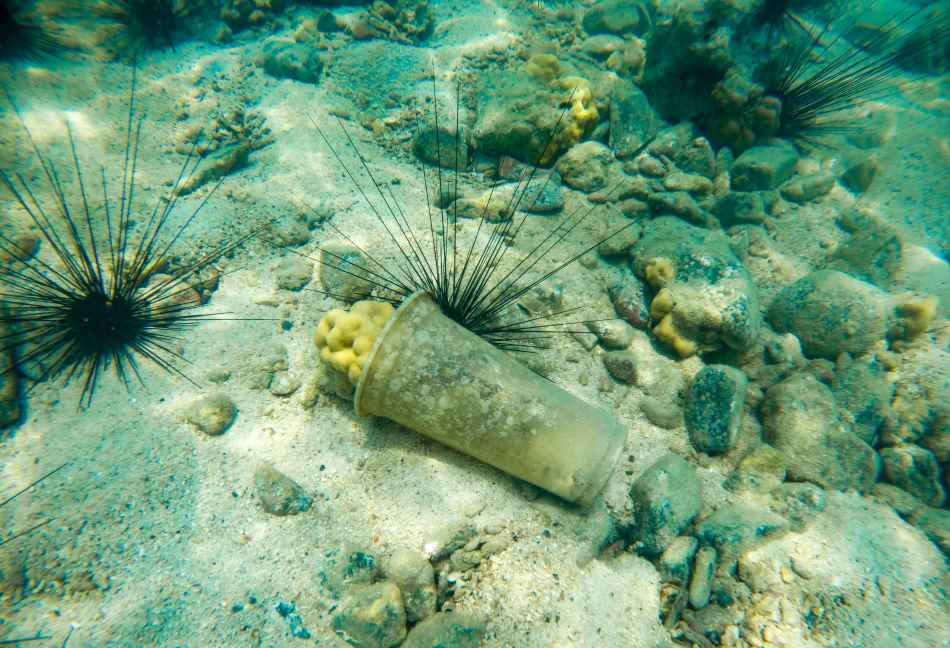
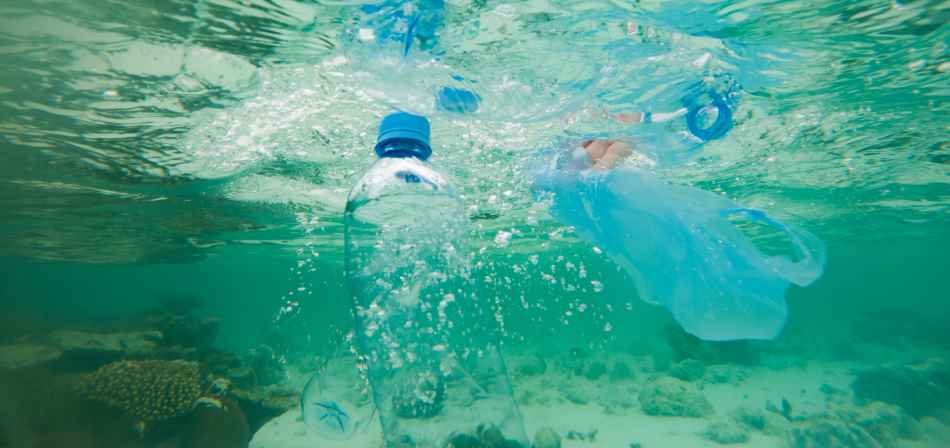
Littering in marine environments, such as the Siete Pecados Marine Park, poses serious threats to the health and sustainability of the ecosystem. Here are the reasons why littering is detrimental:
Physical Harm to Marine Life
Marine animals can become entangled in lager pieces of litter, such as plastic bags, fishing nets, and other debirs. This entanglement can restrict movement, leading to injury, reproductive problems, or even death.
Ingestion of Debris
Many marine animals, including turtles, fish, and seabirds, mistake litter (especially plastic) for food. consuming these foreign materials can cause blockages, malnutrition, internal injuries, and death.
Toxin Accumulation
As plastics break down, they release harmful chemicals. Additionally, plastics in the ocean can absorb toxins from surrounding waters. When marine organisms ingest these plastics, they also consume the toxins, leading to bioaccumulation and biomagnification up to the food chain. This not only impacts marine life but can also affect humans who consume seafood.
Coral Reef Damage
Litter can smother corals, blocking sunlight and making them more susceptible to diseases. Physical damage can also occur if debris, like bottles or cans, are tossed around by waves and scrape against the corals.
Navigation Hazards
Larger pieces of litter can post navigation hazards for boats and can damage equipment, especially, propellers.
Economic Impact
Littered beaches and polluted waters can deter tourism, a significant source of revenue for many coastal regions. The cost of cleanup and waste management is also a burden on local economies.
Aesthetic Degradation
Litter, especially in pristine environment like Siete Pecados Marine Park, diminishes the natural beauty of the area, making it less appealing for both tourists and locals.
Alteration of Natural Processes
Litter can interfere with natural processes, such as water flow and light penetration, impacting the balance of the marine ecosystem.
Long-lasting Impact
Many types of litter, especially plastics, are non-biodegradable and can persist in the environment for hundreds to thousands of years. Continually posing threats to marine life.
Given the fragility of marine ecosystems, like the Siete Pecados Marine Park, and the importance of maintaining their health for both ecological and economic reasons, it’s crucial to minimize littering and promote responsible waste management practices.
4. Fishing
Fishing within a protected marine ecosystem like Siete Pecados Marine Park can have profound negative impacts on the marine ecosystem, especially if it’s not regulated or managed properly.
Depletion of Fish Stocks
Overfishing can lead to significant reductions in fish populations. This not only affects the species being targeted but can also disrupt the balance of the entire marine ecosystem.
Biodiversity Loss
Some fishing methods are non-selective and can catch unintended species also called bycatch. This can result in the decline of non-target species, further reducing marine biodiversity.
Coral Damage
Certain fishing techniques, such as bottom trawling or the use of anchors, can physically damage or destroy coral reefs. Corals provide essential habitats for many marine species and are critical for the health of marine ecosystems.
Trophic Cascade Effects
Removing top predators or key species can cause trophic cascades, where the effects ripple down through the food web. For instance, if herbivorous fish are overfished, the algae and seaweed they feed on can overgrow and kill corals.
Loss of Breeders
Fishing often targets the largest individuals, which are frequently the most prolific breeders. Removing them can impact the reproductive potential of the population.
Behavioral Changes
Regular fishing activities can alter the behavior of marine species, making them more cautious and affecting their feeding and breeding patterns.
Disruption of Ecosystem Services
Marine ecosystems provide various services, including nutrient cycling, water purification, and carbon storage. Overfishing can disrupt these process, leading to broader environmental consquences.
Loss of Habitat
Fishing gear, such as nets and lines, can become lost or abandoned, turning into “ghost gear” that continues to trap and kill marine life. This debris can also damage habitats.
Marine parks like Siete Pecados are often designated as protected areas to conserve marine biodiversity, support research, and offer education and eco-tourism opportunities. Allowing fishing, especially without stringent controls, can undermine these objectives and compromise the health and resilience of the marine ecosystem.
5. Stepping on Corals
Stepping on corals, especially in protected areas like the Siete Pecados Marine Park, can have multiple detrimental effects on the marine ecosystem.
Physical Damage to Coral Polyps
Corals are living organisms cmprised of tiny animals called polyps. Stepping on corals can crush and kill these polyps, causing direct harm to the coral colony.
Fracture of the Coral Skeleton
The force from stepping can break the fragile calcium carbonate structures that corals create. These structures take years to decades to form, and breaking them can ste back the growth off the coral colony significantly.
Stress and Increased Vulnerability
Damaging corals can make them more susceptible to diseases and bleaching events. A stressed coral is resilient to other environmental challenges, such as changing water temperatures or pollution.
Reduced Reproductive Potential
Damaged corals may have reduced energy for reproduction, leading to fewer offspring and decreased ability for the coral community to regenerage.
Sedimentation
Stepping on or disturbing the corals and the surrounding substrate can resuspend sediments, which can then settle on coral surfaces. This sediment can smother corals, blocking light and hampering their photosynthesis process, which is vital for their survival.
Disruption of Ecosystem Balance
Corals are foundational species in many marine ecosystems. Damage to corals because of stepping on them can impact the myriad of species that rely on them for habitat, food, and protection.
Economic and Aesthetic Impact
Healthy corals are essential for eco-tourism, attracting divers and snorkelers from around the world. Damaged corals reduce the aesthetic appeal of a site, which can have economic consequences for local communities relying on tourism.
Long-term Damage
Corals grow very slowly, with some species growing as little as 1 to 3 centimeters per year. This means that the physical damage from a single footstep can take years to decades to heal, if at all.
Cumulative Effects
While one person stepping on coral might seem minor, the cumulative effect of many visitors causing similar damage can lead to widespread degradation of the coral ecosystem.
In Summary: Things You Need to Avoid Doing in Siete Pecados, Coron, Palawan
To protect these delicate and vital ecosystems, it’s crucial to follow best practices when visiting marine protected areas like Siete Pecados Marine Park. This includes not touching or stepping on corals, avoiding fish feeding, avoiding anchoring, avoiding littering, being aware of one’s surroundings while swimming or snorkeling, and respecting guidelines set by marine park authorities.
By being a responsible tourist, you can help maintain both the marine ecosystem and the people who depend on tourism for their livelihood.
Learn how we can help you get to Siete Pecados Marine Park with our Coron Island-Hopping tour.
Note: Photos used in this post were not taken in Siete Pecados Marine Park. These photos were used for demonstration purposes only. We can guarantee that Siete Pecados are still intact and beautiful as ever, just waiting for you to visit it.
